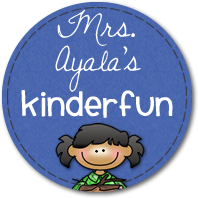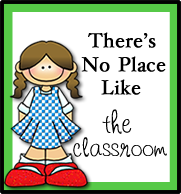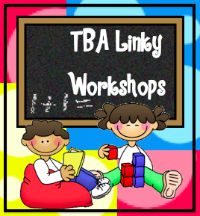A
Recipe for Learning: Cooking with Children
Submitted by Dan Gilbert on behalf of Primrose Schools.
Primrose, a nationally recognized
preschool, child care and day care center offers a nurturing environment
for your child to be safe and happy while learning.
The smells of food cooking are often
enough to lure children into the kitchen, but with hot burners, sharp knives
and other potentially hazardous items is it possible for children to safely
help with cooking? If handled correctly, children cannot only safely help in
the kitchen, but the preparation of meals can become a fun and memorable family
time.
As a popular gathering place in many
households, the kitchen can be a great place to pass down family traditions.
It’s also a place where each member of the family can contribute, teaching
children responsibility while spending quality time together.
“The kitchen is often the most popular
place in the house for families to gather. It’s a place for learning and
sharing, where the family can enjoy quality time,” says Dr. Mary Zurn, vice
president of education for Primrose Schools. “Kitchen time can be a great way
for families to regain some lost, but valuable, family time. Children can also
develop a sense of responsibility by sharing in daily tasks,” said Dr. Zurn.
For safe and fun times with children in the kitchen, parents should incorporate the following suggestions into their routines.
-Think of simple ways your children can be involved. Giving children a task that is meaningful and can be completed independently will make them feel accomplished. Tasks like sprinkling toppings onto a pizza or salad, shredding up lettuce, or decorating desserts with sprinkles are great ways to involve kids and satisfy their urge to help cook. For very young children, let them play with spoons and pots, or roll out some edible play dough that they can knead and shape. Engaging children in the process will help them feel involved and instill a sense of pride in them as they learn to help.
-Be clear about safety rules. Establish kitchen rules and discuss them regularly with children. Also teach them healthy practices like washing their hands both before and after working with food. Even when they know the rules make sure young children are always supervised in the kitchen and don’t let them out of sight. Make sure sharp knives are not in reach of small children and keep pot handles on the stove turned inward so no one accidentally bumps into them. Pay attention to little things that can make a kitchen more kid friendly.
-Let children build up their skills over time. Start to give more control over to older children, letting them follow basic recipes. Make sure to give children simple tasks at first. For example, when letting children use knives, start with having them cut softer items like cheese or bread before learning to chop vegetables. Consistently model correct ways of handling kitchen items for children and help them feel confident around items that could potentially be hazardous.
-Finally, have fun! Try not to make the kitchen a stressful environment. Not worrying too much over little mistakes or spills is a good way to help children relax. Give gentle, constructive criticism when needed so children will be willing to try again. Make sure cleaning up is done together and that it’s not seen as a chore. Turn on some music or sing favorite kids songs while cleaning.
Enjoy eating meals together, and let little assistants know their work is appreciated. Let the kids have input into what to make next. When it is done safely, cooking with children can be a fun way to teach kids valuable life skills.
For safe and fun times with children in the kitchen, parents should incorporate the following suggestions into their routines.
-Think of simple ways your children can be involved. Giving children a task that is meaningful and can be completed independently will make them feel accomplished. Tasks like sprinkling toppings onto a pizza or salad, shredding up lettuce, or decorating desserts with sprinkles are great ways to involve kids and satisfy their urge to help cook. For very young children, let them play with spoons and pots, or roll out some edible play dough that they can knead and shape. Engaging children in the process will help them feel involved and instill a sense of pride in them as they learn to help.
-Be clear about safety rules. Establish kitchen rules and discuss them regularly with children. Also teach them healthy practices like washing their hands both before and after working with food. Even when they know the rules make sure young children are always supervised in the kitchen and don’t let them out of sight. Make sure sharp knives are not in reach of small children and keep pot handles on the stove turned inward so no one accidentally bumps into them. Pay attention to little things that can make a kitchen more kid friendly.
-Let children build up their skills over time. Start to give more control over to older children, letting them follow basic recipes. Make sure to give children simple tasks at first. For example, when letting children use knives, start with having them cut softer items like cheese or bread before learning to chop vegetables. Consistently model correct ways of handling kitchen items for children and help them feel confident around items that could potentially be hazardous.
-Finally, have fun! Try not to make the kitchen a stressful environment. Not worrying too much over little mistakes or spills is a good way to help children relax. Give gentle, constructive criticism when needed so children will be willing to try again. Make sure cleaning up is done together and that it’s not seen as a chore. Turn on some music or sing favorite kids songs while cleaning.
Enjoy eating meals together, and let little assistants know their work is appreciated. Let the kids have input into what to make next. When it is done safely, cooking with children can be a fun way to teach kids valuable life skills.













 OFFICE
SUPPLIES
OFFICE
SUPPLIES





































No comments:
Post a Comment